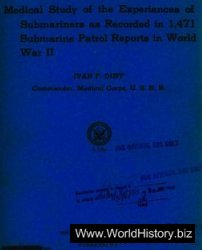The conceptual distinction of colonization from migration is tied to the reassessment of past work on pre-European voyaging in Oceania. Consideration of

Figure 10 Modern inter-island sailing canoe, Bismarck Archipelago. Traditional canoes varied widely in size and design through the Pacific, and in places such as Micronesiawere very sophisticated craft, but those used in the initial colonization of the region may not have differed much from the one shown here. Photograph by author.
The matter has swung between positions that see the settlement of the Pacific as a series of accidental landfalls and those holding that the process was purposeful. The latter has been the prevailing view for some time, with many scholars believing that the archaeological pattern of population dispersal through time and space results from a conscious three-phase strategy of exploration of Remote Oceania. This strategy began with the Lapita diaspora and followed the development from Pleistocene times of seafaring technologies in the sheltered ‘voyaging corridor’ of Near Oceania, where seas are relatively benign and islands quite close together. The first phase, which took people beyond the Solomons for the first time, entailed exploring against the wind so that return voyages with the wind to the point of origin were relatively straightforward. The second phase involved exploring across the wind, where a higher degree of difficulty in returning home was balanced by the knowledge gained about island distribution in the first phase. The final phase, which saw the colonization of South Polynesia late in prehistory, was with the wind, making return voyages harder still, but again balanced by knowledge gained in the first two phases.
The difficulty with assessing this elegant model, which is based largely on modern experience, is that there is virtually no archaeological evidence for the seafaring technologies in question. The ‘against, across and down the wind’ hypothesis assumes that the large sea-going craft and superior navigational skills evident in parts of the Pacific in the recent past were present in the remote past as well. This assumption underpins the approach taken in well-known voyages between major island groups made in modern versions of Oceanic watercraft. It has been contended that the three-phase scenario confuses pattern with purpose, in so far as the pattern broadly reflects a succession of stepwise movements to the next closest islands. This replicates the case with nonhuman biological dispersals through the region. Such movements require neither special high-level navigational skills nor large and sophisticated canoes. Moreover, continual and sometimes quite radical refinements to archaeological settlement chronologies mean that the timing of movements no longer supports the three-phase settlement model in the way it once did. Overall, the evidence suggests that only steerable outrigger sailing canoes were required for the Lapita dispersal to West Polynesia, and relatively simple double-hulled canoes for the settlement of East and South Polynesia (Figure 10). It also seems likely that vessels of both sorts were primarily sailed downwind. To sail what would normally be upwind, people took advantage of seasonal wind-reversals, as they did in ethnographic times, or, in the case of long-distance dispersals against the wind over more extended periods, longer-term trends such as those caused by El Nifio cycles.
See also: Asia, South: Paleolithic Cultures; Ethical Issues and Responsibilities; Extinctions of Big Game; Migrations: Australia; Native Peoples and Archaeology Oceania: Australia; Historical Archaeology in Australia Micronesia; New Guinea and Melanesia; New Zealand Political Complexity, Rise of; Politics of Archaeology Ships and Seafaring; Who Owns the Past?.




 World History
World History









